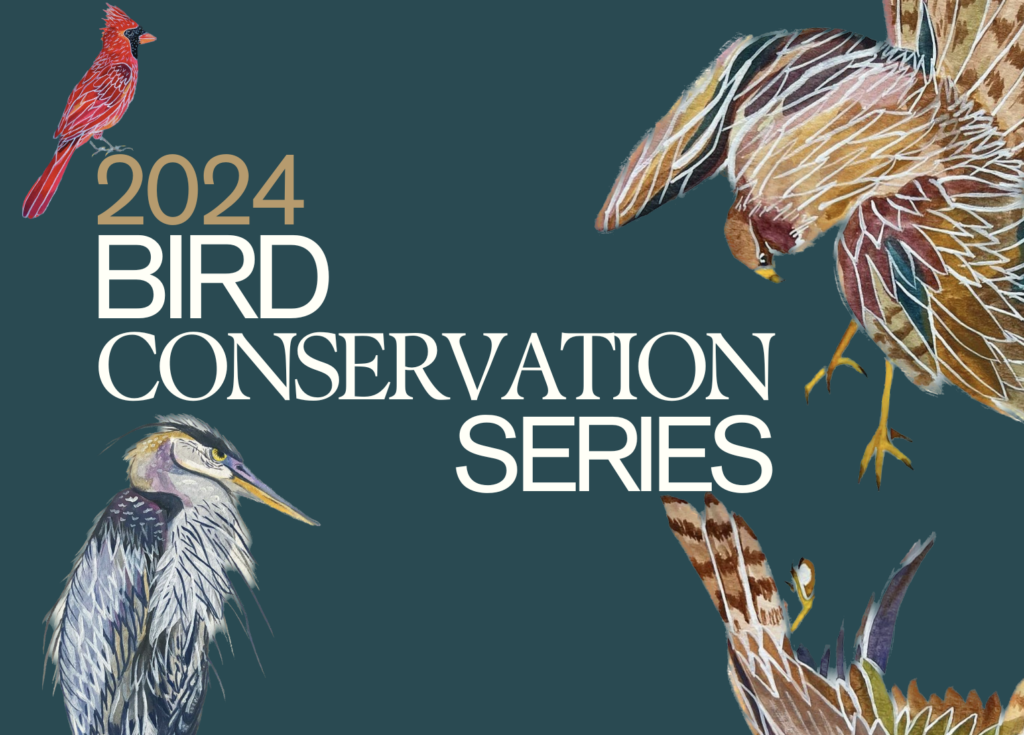ESLC’s 2024 Bird Conservation Series comes to a close


Did you know that 1,533,500 birds crossed the skies of Talbot County last night? In addition to “V”s of migrating geese alighting to farm fields and ponds (a sight intrinsic to the Eastern Shore), more than half of the bird species that breed in North America will also migrate to their wintering grounds this fall. As winter approaches, birds who have been hard at work building summer nests and tending to their young have sufficiently fueled up from abundant food sources and are now feeling the push of cold, shorter days. The genetic itch of zugunruhe (a German word referring to the inner stirring that triggers birds to migrate) has finally begun and migratory birds are ready to find ample food in a warmer elsewhere. Some will travel short distances of a hundred miles or less, or stay put to harbor the winter entirely, but more than 350 of our North American bird species will travel long distances, snowbirding to Central and South America.
Most of this journey will happen under the stars in the late hours of the night but all birds still periodically depend upon “stopover” places where they can rest, refuel, and recover during their perilous migration. The Eastern Shore of Maryland is a vital stopover within the Atlantic Flyway – a flight path utilized by a tremendous number of migrating birds extending from Greenland to South America. Despite the location of this flyway, the Atlantic Coast has the most populated and developed land use out of America’s four major flyways, and urban spawl continues to chip away at the remaining habitat necessary to support migratory birds. Nestled between Philadelphia, Baltimore, Wilmington, and D.C., the conservation landscape and protected open spaces of the Eastern Shore (including ESLC’s 327 conservation easements!) are welcoming beacons of green reprieve for migrating birds. Upwards of 15,000 ducks have been documented to settle in Blackwater National Wildlife Refuge alone during the fall.
This year, Eastern Shore Land Conservancy ran its 3rd Bird Conservation Series, a program designed in 2022 to raise awareness of the importance of conservation work that supports the health of our bird species. ESLC’s conservation work ensures that places of refuge and respite will be forever available to feathered friends. 268 properties protected by ESLC contain habitat conducive to supporting Forest Interior Dwelling Species (FIDS), amounting to 19,916 acres of FIDS habitat. And all over the Eastern Shore, the collective efforts of many conservation groups working to monitor migration and restore habitat makes greater Delmarva a rural respite for wildlife. ESLC’s Bird Conservation Series highlights and promotes the efforts of partners who do the good work of supporting the birds that in turn offer us a sense of place, recreation, and even cultural identity. Throughout our series, we witnessed the fluttering mating dance of American woodcock under moonlight at Pickering Creek Audubon Center, spotted shovelers and pine warblers in the mosaic habitat of Bennett Point Preserve, and marveled at beautiful plumage displays during spring and fall at Foreman’s Branch Bird Observatory.
On October 19th, you can join ESLC for one last bird-focused walk and talk during our Walktober gathering at the Jim and Mary B. Lynch Preserve in Caroline County. Walkers will learn about the importance of stewarding healthy forests for FIDS. From feathers in the canopy to fungi on the floor and everything in between, there is always something new to be found at the Preserve! Sign up today!
We’d also like to again thank local artist Noël Flynn for the beautiful original artwork she shared for this year’s flyers.




Image c/o C. Niciporciukas